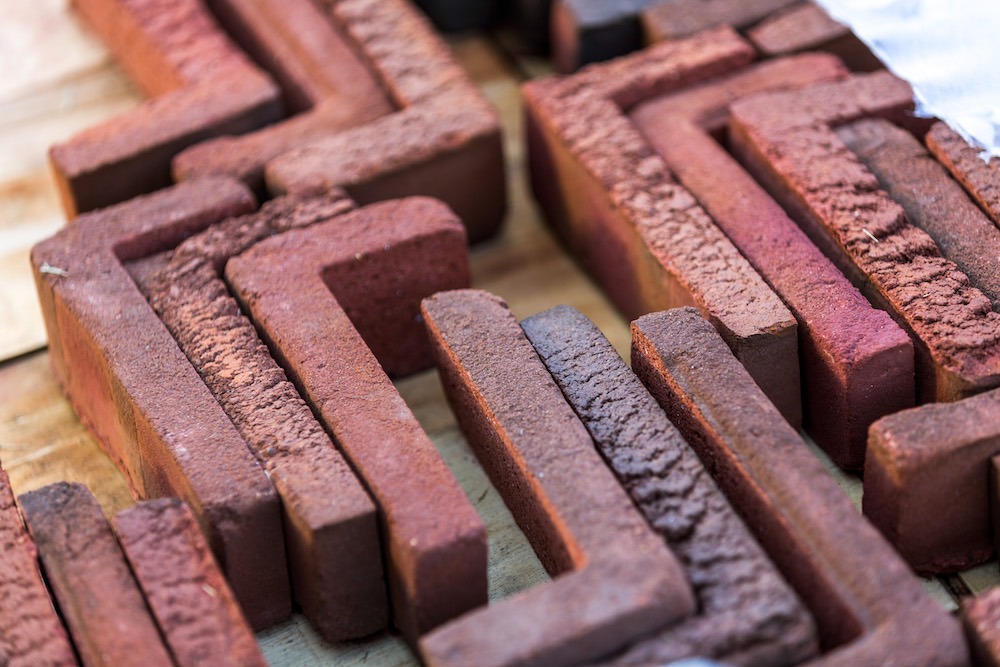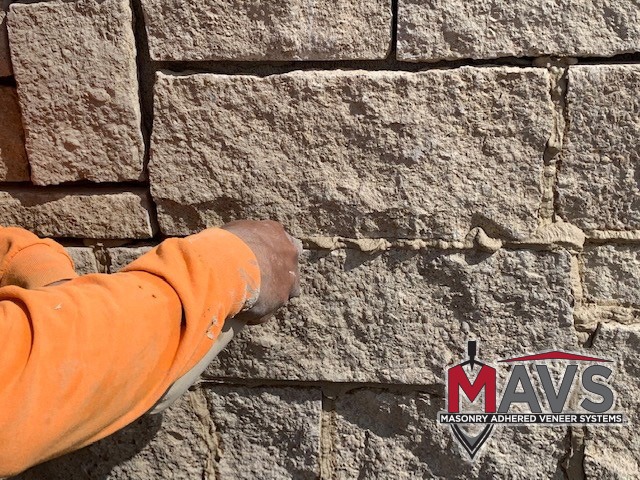Brick to the Future: Thin Brick in 2019
Words: Chris Rodermond
Photos: Glen-Gery, Omega International
Thin brick applications have been a staple in commercial construction for the past few decades, providing long-lasting solutions, excellent aesthetics, and less expensive project costs when compared to traditional brick construction.
Now, with advances in the materials providing more product choice and availability, both commercial and consumer sectors are seeing growth of these materials being used in a number of new and creative interior and exterior applications. In turn, more companies and homeowners are considering how to implement thin brick applications as an alternative to more traditional facades.
A wide variety of colors, textures, finishes, and even upcycled reclaimed brick provide virtually one-of-a-kind customization options for customers. Driven by designers and architects continuing to push for new looks, by specifying thin brick applications into their plans, they can present a well-crafted and unique look to a project while remaining lightweight and cost effective.
In a world where current and future designers grow up with millions of different textures to use in building their first Computer Assisted Designs, or in Minecraft, there is no denying the overall trend in product offerings moving towards more customization, rapid prototyping, and smaller minimums. Manufacturing the machinery to construct these materials to include high levels of customization options leaves open future advances in product offerings.
New commercial construction, such as office buildings, schools, shopping centers, student housing, and apartment complexes have seen an increase in the variety of applications now being implemented. In an effort to be as attractive as possible to tenants and customers, these spaces are designed with that goal in mind, while simultaneously needing to maximize the return on their budget. Thin brick is popping up strategically all over these classes of construction.
In those same commercial applications, thin brick solutions are perhaps making a bigger impact in renovation and refurbishment projects. Since thin brick can be applied to conventional walls, thin brick used in renovation can dramatically change a space with minimal effort and expense. Similarly, new and renovated buildings and homes seeking to match their local village or neighborhood aesthetic find thin brick an attractive option.

On the homeowner level and DIY front, there are many options when considering thin brick as a solution for the home. Almost any interior or exterior floors or walls, backsplashes, bars, pools, patios, gates, garages and porches are all being designed with the carefully considered application of thin brick or other stone veneers.
Try simply going online and searching for images or examples of homes that had vinyl or wood siding replaced with thin brick exteriors. The results provide striking examples of improving the curb appeal of a home, not to mention some of the maintenance benefits. However, an entire exterior does not have to be replaced to make a difference.
According to US Census Bureau data on new home construction in the United States from 2015 and 2017, only 22% of new homes constructed had exteriors finished with brick or brick veneer, while vinyl and stucco combined for 52% of the market, according to the Eye on Housing website. With further advances in technology there appears to be sizable market share ready to be gained with high tech and well-designed thin brick solutions.
We spoke with suppliers and experts in the industry to understand more about what they are seeing regarding trends and advancements in the thin brick market. Michael West, from Omega Products International, sees a rising trend in the market for specification of thin brick that subsequently creates a strong need for strict application standards as these products become increasingly popular. Omega Products International is a leading residential stucco manufacturer in the USA.
“Our customers are seeing an expansion of their use in traditional commercial applications, but now [also] increasing in upscale residential houses and commercial buildings,” West states. Considering that “architects and specifiers love the veneer appearance, thin profile, and lightweight features,” it’s no surprise “adhered masonry veneer is gaining a greater share of building design,” he says.
Marketing Manager Tim Leese of Glen-Gery, a premier manufacturer of bricks and stone products, agrees with West. “Utilization of thin brick on interior applications for both residential and commercial projects continues to remain quite popular,” says Leese. “Thin brick applied as accent walls, bar surrounds, backsplashes and flooring can add warmth, style and modern charm to any new or existing project.” With products that have rustic textures with over-mortared joints to modern grey tones and clean, defined mortar lines, products like Glen-Gery's have endless possibilities when it comes to thin brick.
Changes to the products continue to develop in response to the evolving needs of preferences of their clients. “Most advancements in thin brick veneer are related to color and texture development innovation to produce products that meet the growing demands from consumers and architects,” states Leese. West concurs, maintaining, “Innovations in concrete mix designs are supporting a greater amount of detail in the masonry veneer manufacturing process.” As a result, “this is producing more attractive profiles and colors to support more architectural styles and a more robust color palate.” Larger profiles are also getting more popular, especially those simulating large format stone.
Many suppliers and manufacturers around the world have come to market with robust total wall solutions that aim to exceed engineering standards to help guarantee longevity, strength, and beauty for their customer’s projects, whether they be large scale commercial or residential projects. In both scenarios, using informed suppliers with exacting specifications regarding the building process appears to be one of the most important parts of having a successful experience building with thin brick.
For example, about his company’s products Leese notes: “Glen-Gery’s patented metal panel system provides an alternative installation method beyond the typical mortar and adhesive method. The system has the advantage of mechanical means to support the brick, secure the veneer to the structure, and engage the veneer through interlock with the mortar joints. Recent advancements to the panel and accessory pieces have made it even easier.”
West makes similar observations as to Omega’s customers and quality. “Our unique position in the marketplace is offering an integrated warranty for the wall from studs-to-stone,” he says. “We entered the market with a dedicated line of products responding to our customer base, and our customers had to spend seemingly a lot for something that was usually the least expensive part of the wall finishing.” Omega quickly identified a need that they were well-suited to address, seeing that contractors and designers “needed a premium product that didn’t break the construction budget, and which offered a complete wall warranty from weather barrier to veneer grout.” The answer: MAVS, through which Omega can offer consumers the product confidence and warranty they have come to rely on and trust.

As the use of mixed media continues to be a trend into 2020, thin brick is positioned to have a leading role in the equation. Only the imagination of the designer and the owner are setting the limits on what thin brick can do.
What are the coolest or most interesting applications or innovations you have seen recently with regards to thin brick? Let us know on Facebook.